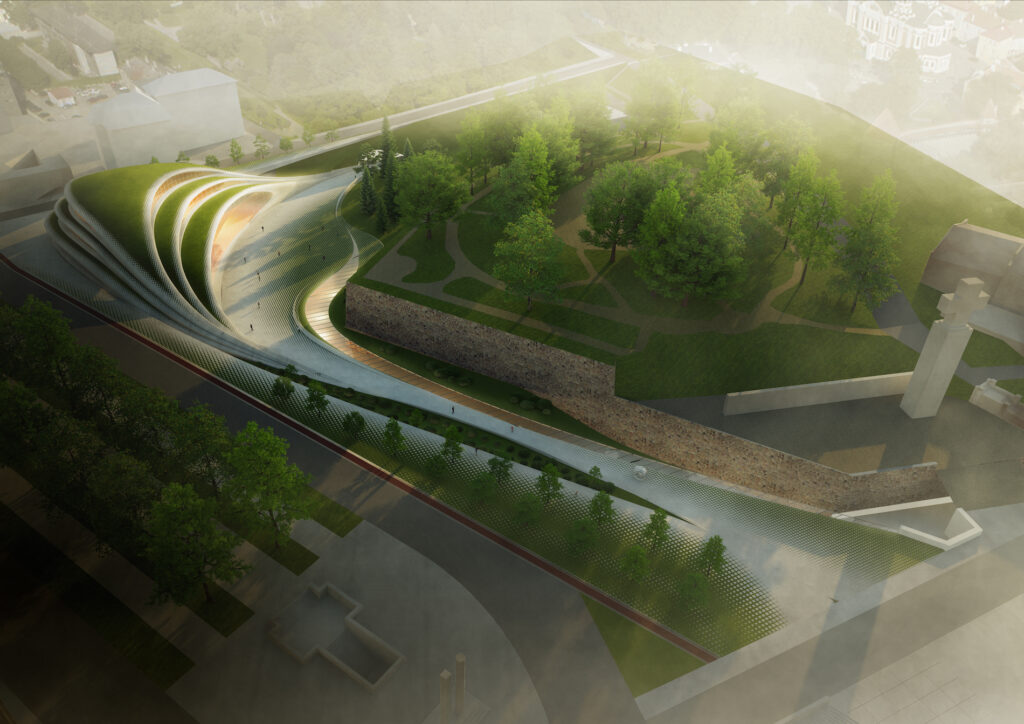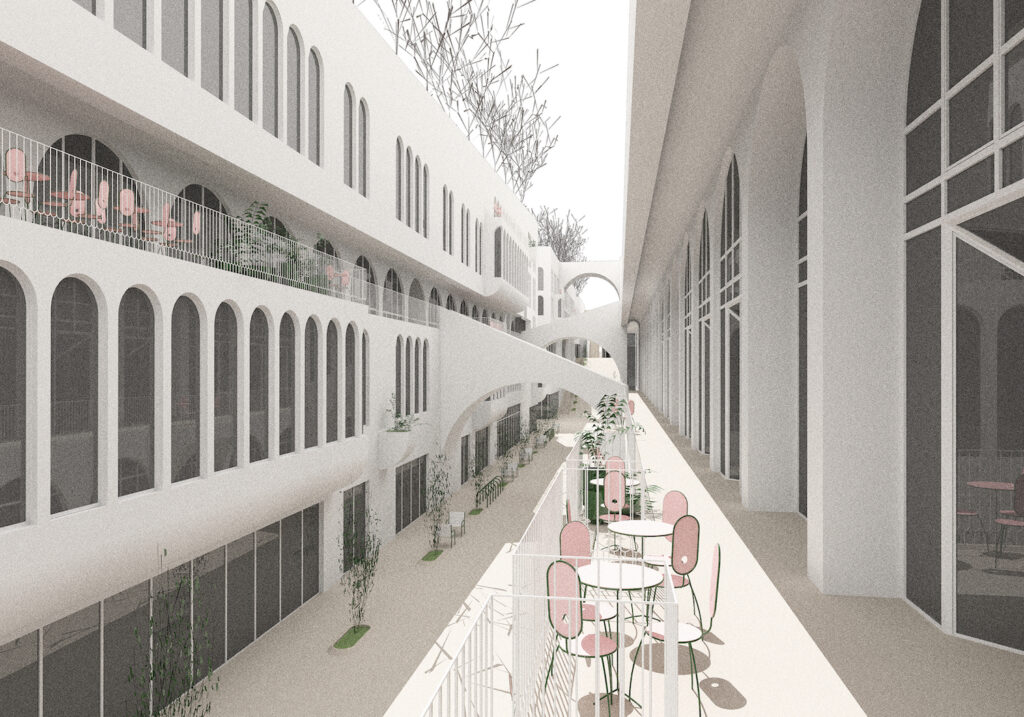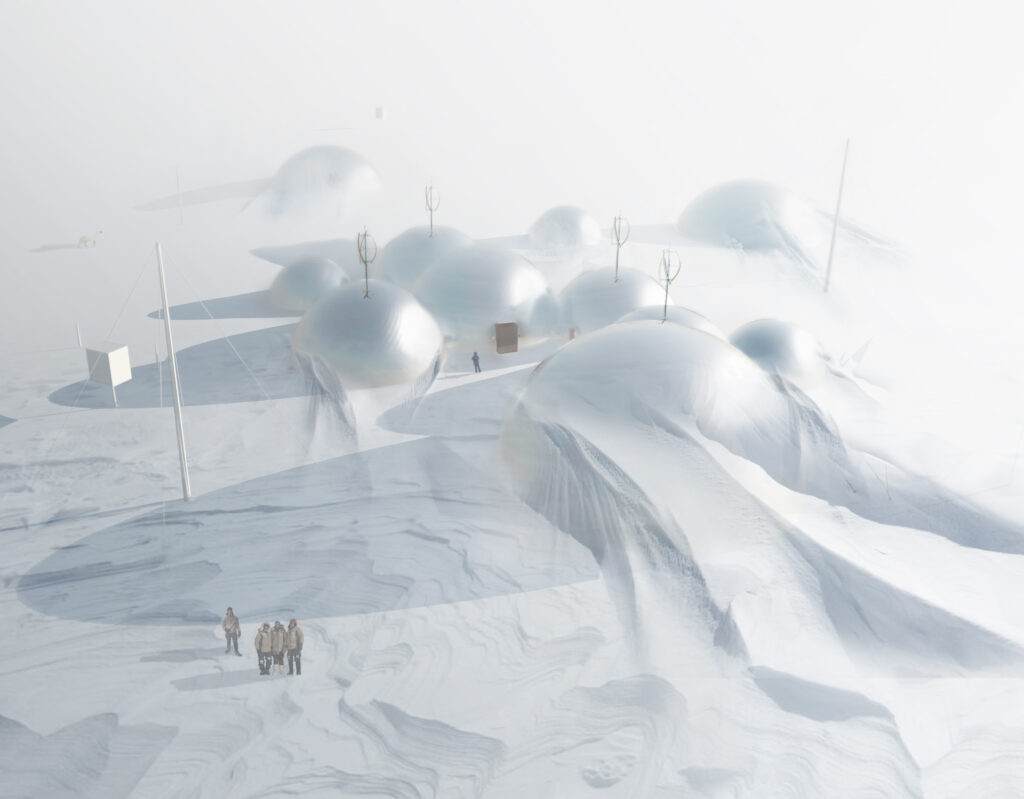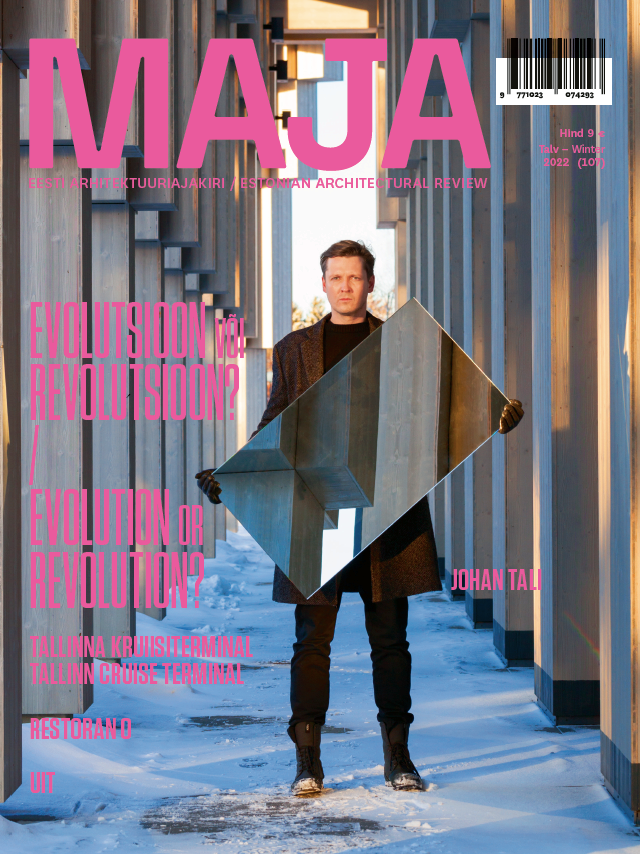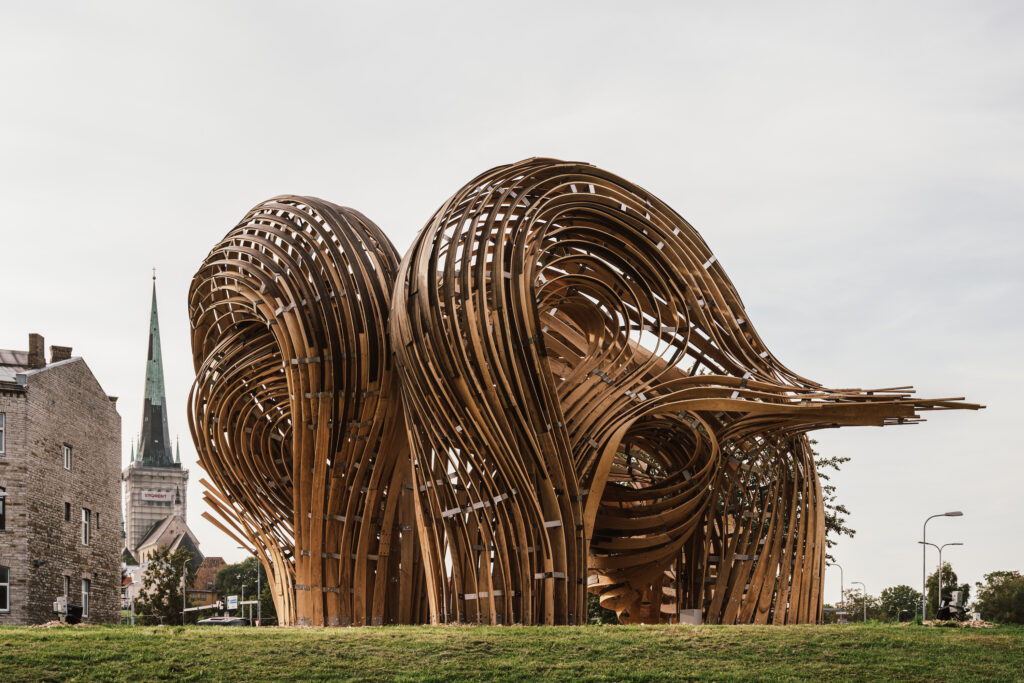The bastion belt should be a park with its use activated by a building.
‘Heliorg’ explores the possibilities for reviving the bastion belt surrounding Tallinn Old Town.
The work marks a reaction to a personal and scary experience with the highrises in central Los Angeles. When I was living and studying in LA in 2010, I imagined a dystopian degenerating city characterised by overwhelming monofunctionality pushing out the weak, increasingly higher and denser office buildings and the street space sinking into darkness.
The current work explores the role of the architect in the face of changing environmental conditions. The Arctic area is confronted with dramatic social, economic and environmental changes. The increasing pressure on the Arctic natural resources and Arctic Ocean waterways sets higher demands for the otherwise sparsely populated area. In order to ensure more efficient search and rescue competence and nature protection, a new infrastructure is needed.
The aim of the work is to achieve harmony and universal beauty. I value milieus and particular atmospheres carrying it. Sometimes I convey it with a single line or a geometric detail that can evolve into a deeper spatial gesture.
Tallinn Architecture Biennale (TAB) "Beauty Matters: The Resurgence of Beauty“, 11.09–15.09 2019.
Although architecture may help to solve (and it does solve) problems, we should not regard it as a primary tool for solving social etc. problems but as a creator of values, novelty and wellbeing. In the 20th century, the creative part of architecture that can also deal with the question of human condition has been undeservedly overshadowed by pragmatics.
The hybrid building merges the library and botanical garden into a spatial whole, a symbiosis of design and high technology. It is located in Burggarten in Vienna – the historical imperial private garden of the Habsburg family, between the Austrian National Library and Palmenhaus.

